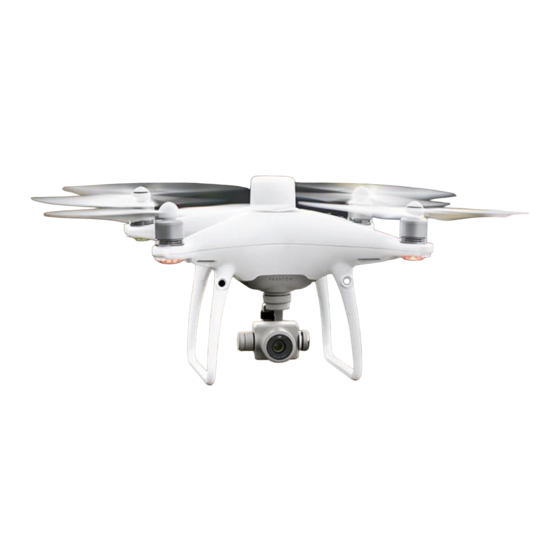dji Phantom 4 RTK Exoneração de responsabilidade e manuais de segurança - Página 12
Procurar online ou descarregar pdf Exoneração de responsabilidade e manuais de segurança para Quadricópteros dji Phantom 4 RTK. dji Phantom 4 RTK 19 páginas. Remote controller
Também para dji Phantom 4 RTK: Manual de início rápido (10 páginas), Manual de configuração (7 páginas), Manual de Perguntas Frequentes (17 páginas)

1. Aircraft and battery performance is subject to environmental factors such as air density and temperature.
a. Be very careful when flying 19,685 feet (6,000 meters) or more above sea level as battery and aircraft
performance may be reduced.
2. DO NOT use the aircraft near accidents, fire, explosions, floods, tsunamis, avalanches, landslides, earthquakes,
dust, or sandstorms.
Interference with Communications
1. Fly in open areas. Tall buildings, steel structures, mountains, rocks or even trees may affect the accuracy of the
on-board compass and block the GNSS signal.
2. Avoid interference from other wireless equipment, because it may affect the remote controller.
3. DO NOT fly near areas with magnetic or radio interference. These include but are NOT limited to: high voltage
lines, large scale power transmission stations or mobile base stations and broadcasting towers. Failing to do so
may compromise the transmission quality of this product or cause remote controller and video transmission errors
which may affect flight orientation and location accuracy. The aircraft may behave abnormally or go out of control
in areas with too much interference.
4. When using the Multi-Aircraft Control function, to avoid interference among operation groups, do not operate more
than three groups within a 50-meter radius. Unless using the Phantom 4 RTK with a DJI D-RTK 2 High-Precision GNSS
Mobile Station, it is necessary to manually configure each remote controller's serial number in the DJI GS RTK app.
Operating the Aircraft Responsibly
To avoid serious injury and property damage, observe the following rules:
1. Make sure you are NOT drunk, taking drugs, under the influence of anesthesia, or suffering from dizziness,
fatigue, nausea or any other conditions, whether physical or mental, that could impair your ability to operate
the aircraft safely.
2. Execute the CSC will stop the motor when the aircraft is airborne (if enabled in the app). The landing function
of the aircraft will not be triggered. DO NOT perform the aforementioned combination command unless in an
emergency situation.
3. Upon landing, power off the aircraft first, then switch off the remote controller.
4. DO NOT drop, launch, fire or otherwise project any dangerous payloads on or at any buildings, persons or
animals, or which could cause personal injury or property damage.
5. DO NOT use the aircraft that has been crashed or accidently hit, or the aircraft that is not in good condition.
1. Make sure you have been sufficiently trained and have contingency plans for emergency situations or for when
accidents occur.
2. Make sure you have a flight plan and never fly the aircraft recklessly.
3. Respect the privacy of others when using the camera. Make sure you comply with local privacy laws, regulations,
and moral standards.
4. DO NOT use this product for any reason other than general personal use. DO NOT use it for any illegal or
inappropriate purpose (such as spying, military operations, or unauthorized investigations).
5. DO NOT use this product to defame, abuse, harass, stalk, threaten or otherwise violate the legal rights (such as
the right of privacy and publicity) of others.
6. DO NOT trespass onto private property of others.
©
2018 DJI All Rights Reserved.
11
